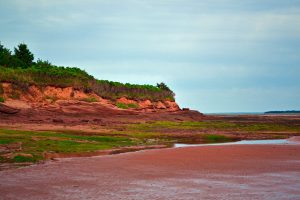Brockville, Ont. has become the first community in Canada to host an underwater diving park.
Known as the Centeen Memorial Dive Park and located in the St. Lawrence River, it is populated with concrete statues of people, sturgeons and even park benches aimed at preventing novice divers from accidentally damaging the area’s shipwrecks—some which date back to the War of 1812.
“We’ve been struggling for a few years to minimize the damage that is happening to the wooden shipwrecks in the Thousand Islands area,” said Thomas Scott, chair of the Thousand Islands chapter of Save Ontario Shipwrecks. “New divers have certification to get down to 60 feet, and when you first start it takes a while to develop, to understand buoyancy and techniques. So they were diving down and didn’t have control and we’d see wood coming off.”
The artistic approach to mitigating damage was inspired by a large art exhibit in Cozumel, Mexico called “The Silent Evolution,” a series of underwater statues used to attract tourists as well as support the local coral reef.
The statues in Brockville were commissioned from two local high school art classes. This year, 10 students will have their dive training paid for in order see their work underwater.
The statues have various themes including nature and commemoration. One series in the park consists of five human sculptures looking upward as a memorial to those who have died on the busy St. Lawrence Seaway.
“The St. Lawrence pretty much populated this area; it was the highway before trains, and before the seaway was expanded,” said Scott.
The area’s rich commercial history has resulted in approximately 25 shipwrecks, as well as countless findings of old coins, pottery and even an old carriage with an attached horse skeleton. It is a popular area for divers and amateur archaeologists alike.
“On a Saturday or Sunday it’s not unusual to see 100 to 120 people [diving],” said Scott. It’s a bit early to tell if [the statues] will slow down the ships’ deterioration, but we have high hopes.”
Currently there are 15 statues in the water, but on June 17th and 18th up to 10 more will be installed—including mermaids, turtles, more humans, and a clownfish inspired by the Disney character Nemo. Scott and the Save Ontario Shipwrecks crew hope to install about 70 statues over the next decade.






